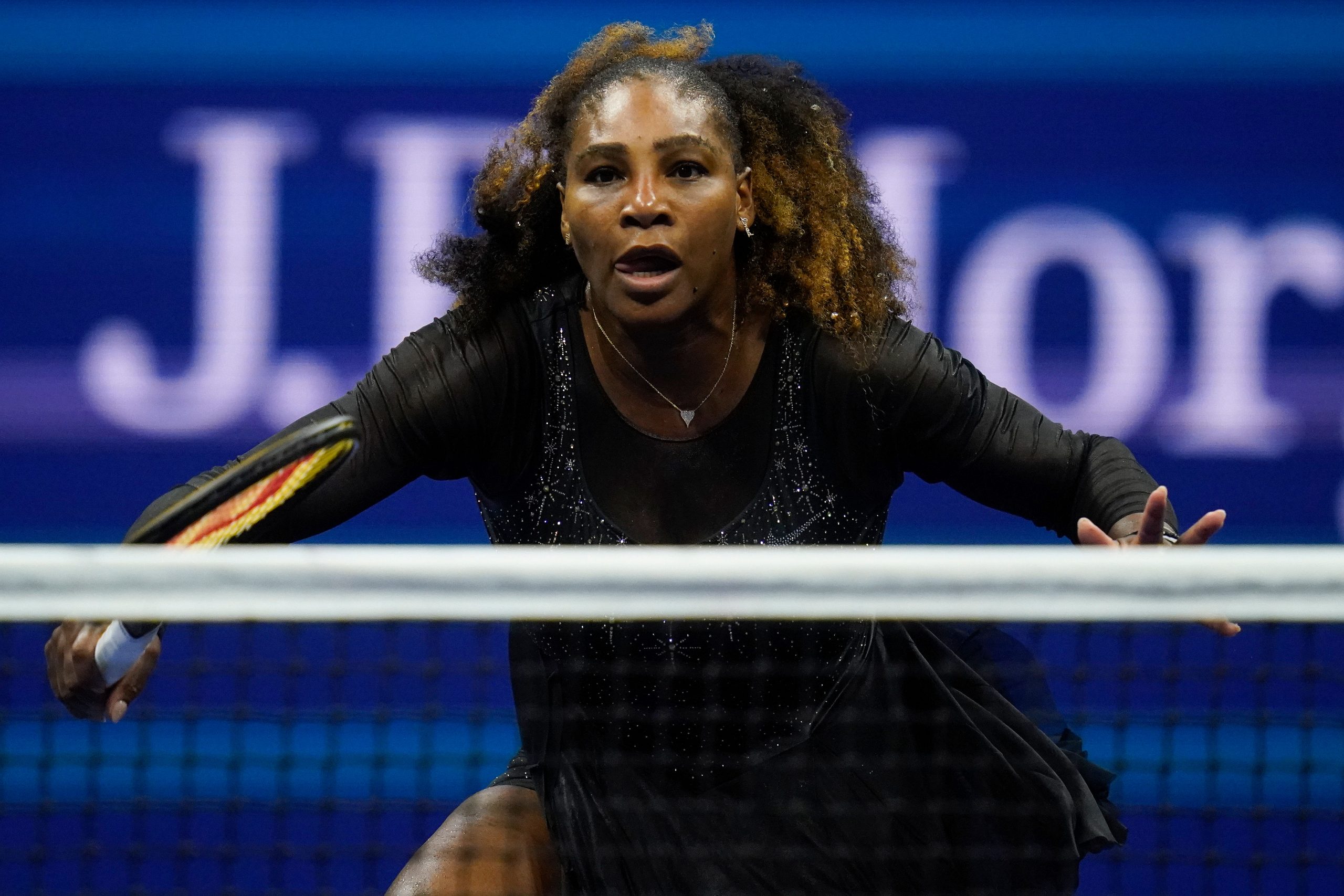The greatest all time server in women’s tennis, Serena Williams, lost an almost certain career-ending third round match at the 2022 US Open to Australia’s Ajla Tomljanovic. Endings or near endings are as good a time as any to look at the player and their place in the pantheon and a certain German named Steffi Graf is the looming tower way more difficult to overshadow than the one that incidentally took out Serena at Flushing Meadows.
As an 18-year-old Serena Williams won her first Grand Slam at the 1999 US Open by beating Switzerland’s Martina Hingis in straight sets. It was also the year when the 30-year-old German Steffi Graf last competed.
The preceding years of 1998 and 1997 were tough for Steffi Graf as she battled knee and back injuries and missed the second half of 1997 and the first half of 1998 (4 Grand Slams). A decade after winning her first Grand Slam, for the first time, in 1997 and then in 1998 Graf did not win a single Major.
Serena was coming up as an 18-year-old and Graf was bowing out in 1999 and they never met in 1998 when Graf was back on the court after surgeries. A quarterfinal meeting was on the cards for them at the 1998 US Open but neither progressed that far with the American bowing out in the third round.
It was no different at the 1999 Australian Open; while Graf finally managed to make it to the quarterfinal where she lost to arch-rival Monica Seles, Serena’s defeat came at the hands of Sandrine Testud – again, they missed out on playing at the last-eight stage.
That Australian Open was preceded by the first ever meeting between Williams and Graf. It came in the second round at WTA Sydney and Graf came through in three fighting sets in a match which lasted nearly two and a half hours.
In the next match the German went on to defeat Venus Williams before going down to the top seeded Lindsay Davenport in the semifinal.
Serena went on to win her first ever WTA title at the Open Gaz de France by beating Amelie Mauresmo in the final and then stretched her winning streak by beating Davenport en route to a second successive final in a WTA competition. It was here that she met Graf again.
This time, at the Indian Wells Open, the story was different. Williams grabbed the first set, Graf came back to draw level before going on to take a 4-2 lead in the final set. Serena broke Graf for the first time since the opening set and then repeated it in the 11th game of the third set. The American served it out to complete a 6-3, 3-6, 7-5 win leaving fans wanting a lot more.
Unfortunately that was the last time the two legends played each other. The ageing and back-from-injury Steffi Graf made the young and hungry Serena sweat for her 1-1 equaling win in a WTA tournament. It is anybody’s guess how it would have been if Serena had met Steffi in a Grand Slam where out of the three that Graf played, she lost to her greatest rival Seles in Australia, won the French beating another great rival in Hingis, and lost the Wimbledon final to the No. 1 Devenport. That year Serena was ousted in the third round of the Australian and the French, she missed Wimbledon and won the US Open. It was by far a better year for the retiring German. Graf retired on a high having won a Major in the year she retired. Serena is going after having last won at the 2017 Australian Open, a more than four-and-a-half-year drought.
Serena’s first 10 Grand Slam wins came between the 1999 US Open and the 2009 Australian Open—a period in which she beat her sister Venus Williams five times in a row and had wins against Martina Hingis in 1999, Davenport in 2005 Australian, Maria Sharapova in 2007 Australian, Jelena Jankovic in the 2008 US Open and Dinara Safina in the 2009 Australian. Sir Geoffrey Boycott would have said: “My mom could have beaten Safina and Jankovic.”
Steffi’s first 10 Grand Slam wins came between the 1987 French Open and the 1991 Wimbledon—less than half of the time Serena took in which Graf beat Martina Navratilova four times, Chris Evert and Natasha Zvereva once each, Gabriela Sabatini twice, and Helena Sukova and Mary Joe Fernandez once each. Graf won 10 out of 15 finals that she made from 1987 to 1991, losing two to Navratilova and one each to Arantxa Sanchez Vicario, Monica Seles and Gabriela Sabatini. Total domination of the competitive field by Graf, while Serena could not make it to as many finals as the German did.
Stark Fact: In 10 injury-free years Steffi Graf won 21 Grand Slams including a Calendar Golden Slam (All four plus the Olympic Gold in 1988) and for all 22 it took her 13 years. Serena took 24 years and even if four years are taken out it still took her 20. Steffi heads the list for a record 377 weeks at No. 1 with Serena having 319 weeks at the top.
Graf is the only player, male or female, to have won all four Majors at least 4 times. She is also the only player in the Open Era, male or female, to have won three majors in a Calendar Year five times—Serena has done that twice.
Navratilova, Hingis, Seles, Sanchez Vicario, Sabatini, and Davenport are fascinating rivalries that Steffi Graf had to endure and overcome. For Serena it has largely been sister Venus Williams.
On peak value, defined as at least a three-year-period when a player was way above the field, Steffi Graf beats Serena Williams by a country mile. The 5-year-period from 2012 to 2017 where Serena won 10 out of the 20 Grand Slams is her peak value. For Graf 10 in a 5-year-period once (1987-1991, she also reached more finals) and then another of 10 in a 4-year-period (1993-1996) is the peak value. And then there are the aesthetics of playing the game, the ballet that a tennis player performs on court. On that, who can argue against Steffi Graf?
Stats can prove the hypothesis any which way and impact comes down to what fans make of the legacy and so without adieu take your pick.







